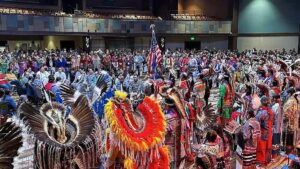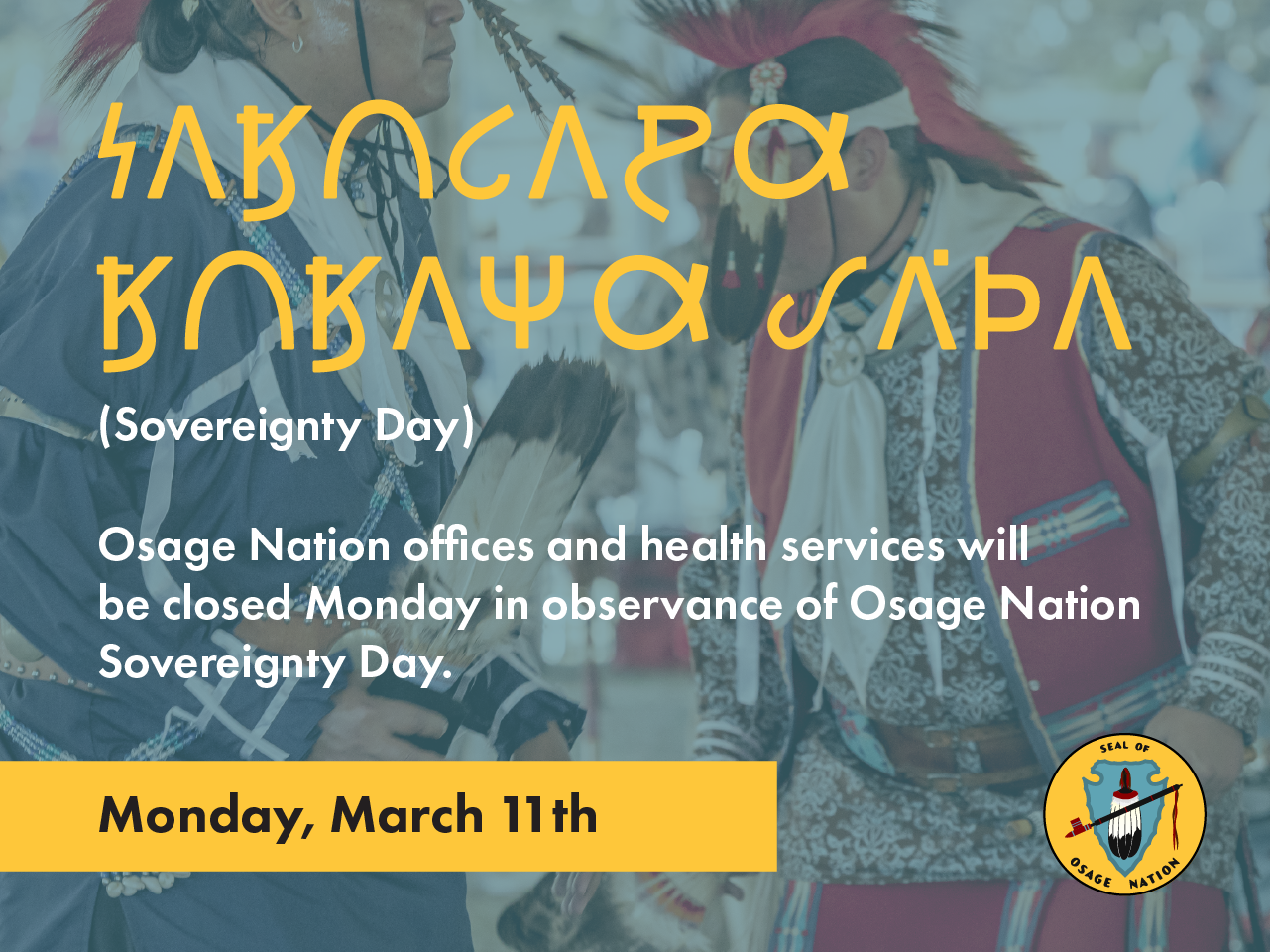
The Unfolding Story of Osage Sovereignty: From Black Gold to Self-Governance
Pawhuska, Oklahoma – In the undulating plains of northeastern Oklahoma, where the prairie grasses meet the sky, lies the heart of the Osage Nation. Their story is one of profound wealth, unimaginable tragedy, and an enduring struggle for self-determination. For centuries, the Osage have navigated the complex currents of American history, asserting their inherent sovereignty against overwhelming odds. Today, their journey continues, marked by legal victories, economic innovation, and a vibrant cultural resurgence that defines what it means to be a self-governing people in the 21st century.
The Osage’s unique path to sovereignty is inextricably linked to the land they purchased in 1872 after their forced removal from Kansas. Unlike many tribes whose lands were allotted or held in trust, the Osage Nation purchased their reservation outright, retaining subsurface mineral rights collectively. This foresight, born of a deep connection to their ancestral lands and a keen understanding of their inherent rights, proved to be their greatest blessing and, for a time, their most terrible curse.

The Era of Black Gold and the Reign of Terror
The early 20th century transformed the Osage. Beneath their feet lay one of the largest oil deposits in North America. By the 1920s, the Osage Nation was, per capita, the wealthiest people in the world. Their "headrights"—shares in the mineral estate—brought immense wealth to individual Osage citizens. This unprecedented prosperity, however, attracted a sinister element. White opportunists, swindlers, and murderers descended upon the reservation, leading to what became known as the "Reign of Terror."
Dozens of Osage men, women, and children were systematically murdered for their headrights, often through poison or orchestrated "accidents." The FBI, a nascent agency at the time, launched one of its first major homicide investigations, uncovering a vast criminal conspiracy. David Grann’s gripping book, "Killers of the Flower Moon," and its subsequent cinematic adaptation, brought this dark chapter to global attention. Grann meticulously documented the horror, quoting Osage survivor Mollie Burkhart, whose family was decimated by the killings. The Reign of Terror wasn’t merely a series of individual crimes; it was a systemic assault on Osage autonomy, a brutal attempt to strip a sovereign people of their wealth and, by extension, their right to self-govern.
"The Osage were being murdered for their money, and the government was doing little to stop it," Grann writes, encapsulating the profound betrayal felt by the Osage. This period vividly illustrated the fragility of their sovereignty when faced with external greed and a paternalistic federal system that, despite its mandate to protect, often enabled exploitation. Federal guardianship, while intended to safeguard Osage wealth, frequently undermined their capacity for self-management, fostering dependency and creating loopholes for abuse.
The Long Road to Self-Determination
The aftermath of the Reign of Terror left deep scars, but it did not extinguish the Osage spirit. The mid-20th century saw the federal government swing between policies of "termination"—an attempt to dissolve tribal governments and assimilate Native Americans—and "self-determination." The Osage, with their unique mineral estate and strong tribal identity, largely resisted the termination policies that devastated many other tribes.
The Indian Self-Determination and Education Assistance Act of 1975 marked a pivotal shift, allowing tribes to assume control over federal programs and services designed for their people. For the Osage, this act provided a framework to rebuild their governmental infrastructure and assert more direct control over their affairs.
A monumental step in this journey came in 2006, when the Osage Nation ratified its new constitutional government. This marked a profound return to self-governance, establishing a modern, three-branch system of government with legislative, executive, and judicial branches. Principal Chief Geoffrey Standing Bear, a key figure in this constitutional reform, has often emphasized the significance of this moment. "We went from a tribal council whose authority derived from Congress to a government whose authority derived from our people, from our inherent sovereignty," Standing Bear once stated, highlighting the shift from delegated authority to inherent power. This new constitution empowered the Osage to create their own laws, administer justice, and manage their resources with greater autonomy than they had experienced in generations.

Pillars of Modern Osage Sovereignty
Today, Osage sovereignty is manifest in a multifaceted approach to governance, economic development, and cultural preservation.
-
Economic Diversification Beyond Oil: While the mineral estate remains a vital asset, the Osage Nation has strategically diversified its economy. Beyond casino gaming, which provides significant revenue, the Nation has invested in ventures such as Osage Nation Energy Services (an oil and gas field services company), Osage Nation Construction, Osage Nation Ranch, and healthcare services. This economic independence is a cornerstone of true sovereignty, allowing the Nation to fund its own programs and determine its own future without sole reliance on federal appropriations or a single resource.
-
Robust Governmental Infrastructure: The Osage Nation now boasts a sophisticated government providing a wide array of services to its citizens, including housing, education, healthcare, social services, and law enforcement. The Osage Nation Police Department enforces tribal laws and works in cooperation with local, state, and federal agencies, demonstrating the practical exercise of tribal jurisdiction. The tribal court system resolves disputes and administers justice, ensuring that Osage laws are upheld by and for the Osage people.
-
Cultural Revitalization and Language Preservation: Sovereignty is not merely political; it is deeply cultural. The Osage Nation has made significant investments in preserving and revitalizing its language, traditions, and arts. The Daposka Ahnkodapi (Our School) offers immersive Osage language education, ensuring that the next generation speaks the tongue of their ancestors. "Our language is our identity; it connects us to our ancestors and our future," remarked an Osage elder during a language class, underscoring the vital link between linguistic and cultural sovereignty. Cultural events, stomp dances, and traditional ceremonies are regularly held, strengthening community bonds and reaffirming the unique Osage identity.
-
Land, Water, and Environmental Stewardship: The Osage Nation’s deep spiritual connection to the land informs its approach to environmental protection and resource management. They are actively engaged in water rights issues, understanding that control over water resources is fundamental to their future and the health of their lands. Furthermore, the Nation participates in environmental conservation efforts, managing their lands responsibly and advocating for policies that protect their natural heritage from pollution and exploitation.
Current Challenges and Jurisdictional Frontiers
Despite these strides, the Osage Nation, like all tribal nations, continues to navigate complex jurisdictional challenges within the American legal landscape. The landmark 2020 Supreme Court ruling in McGirt v. Oklahoma reaffirmed that a large portion of eastern Oklahoma, including the Osage Reservation, remains "Indian Country" for purposes of the Major Crimes Act. This decision had profound implications for tribal sovereignty, clarifying and expanding tribal criminal jurisdiction over crimes committed by or against Native Americans on reservation lands.
For the Osage, McGirt reinforced their reservation boundaries and reasserted their inherent governmental authority, though the specifics of its application continue to evolve. This ongoing legal and jurisdictional dance with state and federal governments highlights the continuous effort required to assert and maintain tribal sovereignty in a nation that often struggles to fully recognize the inherent rights of its first peoples.
The Osage Nation also faces internal challenges, including the ongoing management of the mineral estate, which is still held in trust by the U.S. government, and the need to balance traditional values with the demands of a modern economy. Yet, their history of resilience, innovation, and unwavering commitment to their unique heritage provides a strong foundation for addressing these complexities.
A Future Rooted in Self-Determination
The story of the Osage Nation is a testament to the enduring power of sovereignty. From the dark days of the Reign of Terror, when their wealth became their undoing, to their determined resurgence as a self-governing nation, the Osage have consistently demonstrated their right and capacity to determine their own destiny. Their journey is a powerful reminder that sovereignty is not a gift granted by external powers, but an inherent right—a continuous unfolding of self-determination, sustained by cultural pride, economic independence, and a deep, abiding connection to their ancestral lands and their future generations. The Osage Nation stands as a beacon of what tribal sovereignty truly means: not just political autonomy, but the complete freedom to live, thrive, and govern themselves according to their own laws and traditions.


